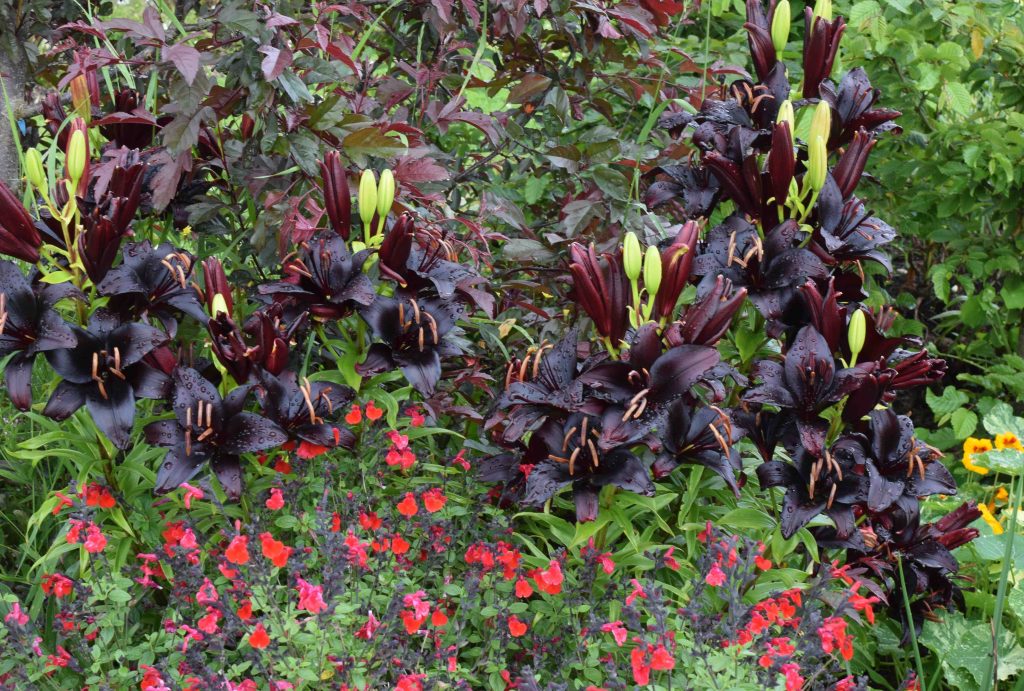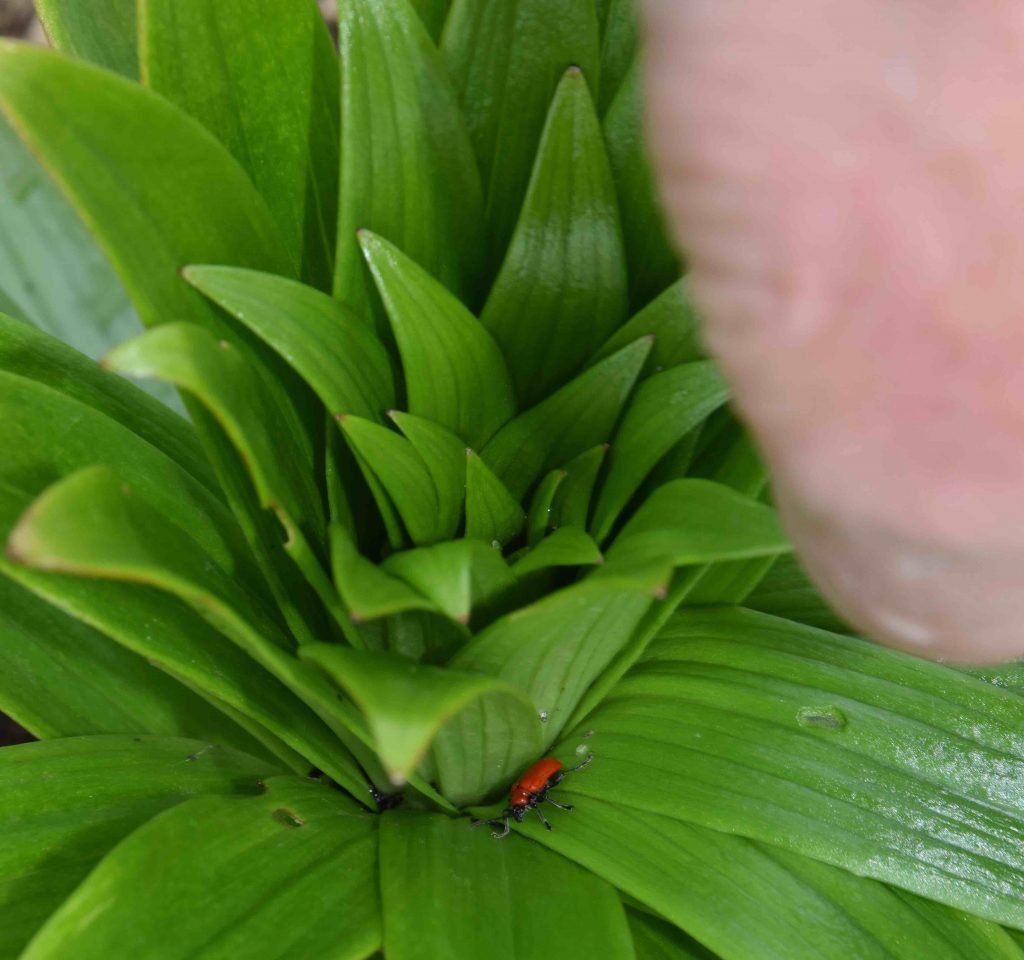
Lilies have always been shrouded in mystery and a sense of the exotic. Their large and spectacular flowers are often heavily fragrant and, unlike some other summer bulbs, they are hardy and undamaged by winter cold. They have upright stems that take up little room and they are perfect planted among other herbaceous plants or small shrubs as I do in my own garden, above.
Not all lilies are the same and to get the best from them you need to choose the right lily for your garden. All prefer a little shade but they will grow in full sun as long as they are not too dry. They can be grown in the border or in pots. The bulbs should be planted about 15cm deep (with a few exceptions) because they produce roots from the new stem that grows from the bulb. Because of this, and the height of the stems, they are best grown in fairly large pots, at least 30cm deep and wide.
Most lilies tolerate lime in the soil, including the July-blooming Asiatic lilies (see ‘Night Rider’ below), the new ALA lilies (above) which are hybrids with Asiatics, the trumpet lilies such as ‘Pink Perfection’ and Lilium regale, and the incredible, tall ‘Tree‘ or ‘Skyscraper’ lilies, actually hybrids of Oriental and Trumpet lilies. The true Oriental lilies, with huge, fragrant blooms, are lime-haters and must be planted in acid soil or, in pots, ericaceous compost. The others can be planted in multipurpose compost.

Lilies for cutting
If you grow some lilies you can cut them for the house. When you cut them, leave about half the stem growing and that way the plant is not damaged and it will bloom at least as well the next year.
Planting
Like most plants, lilies look best when planted in groups. Packs usually only contain one or two bulbs so buy a few so you can plant a decent clump. Lily bulbs will bloom the first year but most get better in subsequent years. In fact the ‘Tree’ lilies are often a bit disappointing the first year, reaching only a metre or so high. But they get stronger every year and will reach about 2.4m high in bloom after three years with dozens of heavily scented blooms.
Dig over the soil, add compost and plant them about 15-20cm apart and about 15cm deep. If the bulbs are starting to sprout take care not to snap off the shoots. Then mark the area where they are planted with several short canes so you can avoid damaging the shoots as they grow. I often plant them around small shrubs such as potentilla or plants that need little attention, like peonies, so I do not accidentally disturb them.
The elephant in the room

There is one major problem when it comes to growing lilies; lily beetle. And it is a horror!
The bright red beetles wake up in spring and emerge from the soil with just one thing on their mind – making friends and laying eggs on your lilies. As soon as they wake up they start to eat your lilies and when the eggs hatch the grubs eat them too. They must be killed immediately or they will ruin the plants and they will even eat the flower buds.
If you see chunks eaten out of the leaves, look for the beetles and carefully pick them off – they drop to the ground when they see you – or use your preferred spray to kill them. I do not like to use sprays but this is the one plant that does get sprayed because, without it, I would have no lilies. I also feel it is irresponsible not to kill them because the adults will fly off to neighbouring gardens.
Lilies and cats

Lilies are very harmful to cats. I have both. It is the pollen that is the issue here so, especially if it gets on their coat and they wash it off. They don’t actively eat pollen. If you have cats, be careful to remove fallen flowers which drop along with the pollen-bearing stamens. You can go over plants and pick off the stamens as the flowers open if you want. I do this with my white lilies anyway because the pollen stains the flowers in the rain.
Although I am not complacent and love my cat dearly, I do grow lilies. There is little chance of my cat brushing against the open flowers in the garden. If they were in a pot on a patio where she might be wandering along a low wall it might be different. I think the biggest risk is cut flowers in the home.

When picking lilies for the house pick off the stamens. This prevents the lily pollen from staining furniture and clothing too.
You can now buy pollen-free lilies and most of the doubles do not produce pollen so these may be a good choice if you are worried about your cat brushing against the blooms.

Now is a perfect time to plant lilies so why not splash out and buy some to give your garden a touch of the exotic this summer. They are colourful, fragrant and fat-free!